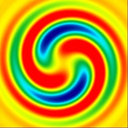Using 3D-UPLC-DAD and a new method-verification by adding mixture standard compounds to determine the fingerprint and eight active components of Naoluoxintong decoction.
Keywords
Abstract
Naoluoxintong decoction (NLXTD) is a traditional Chinese formula which has been used for the management of ischemic stroke in China for two hundred years. In this study, we developed a comprehensive and reliable analytical method to qualitatively analyze the components in NLXTD. This novel method was based on three-dimensional ultra-fast high performance liquid chromatography coupled with diode array detector (3D-UPLC-DAD) with an additional component validation method via incorporation of the mixture standard compounds during the verification step. In addition, the relationship between active components and "Monarch drug, Minster drug, Assistant drug, Guide drug" were determined. Our results showed that gradient elution with the mobile phase of 0.02% formic acid and methanol was the optimum condition to separate peaks. A total of 35 common peaks were established by comparing ten batches of NLXTD, and eight components were identified, including Calycosin, Calycosin-7-O-β-d-glucoside and Ononin in Astragali radix (Monarch drug); Ligustrazine in Chuanxiong Rhizoma (Minster drug); 4-Hydroxbenzyl alcohol and Parishin A in Gastrodiae rhizome (Assistant drug); Ferulic acid in Angelicae sinensis radix (Guide drug). The validation method of verification by adding mixture standard compounds combined with 3D-UPLC-DAD method, with the merits of greater resolution, higher speed of analysis and higher sensitivity, provided a semi-quantitative and qualitative analysis method to assess traditional Chinese medicinal prescription consisting of many bio-active components. Finally, our study has provided systemic and scientific evidence to explain the relationship between the bio-active components in the NLXTD and traditional Chinese medicine theory.




